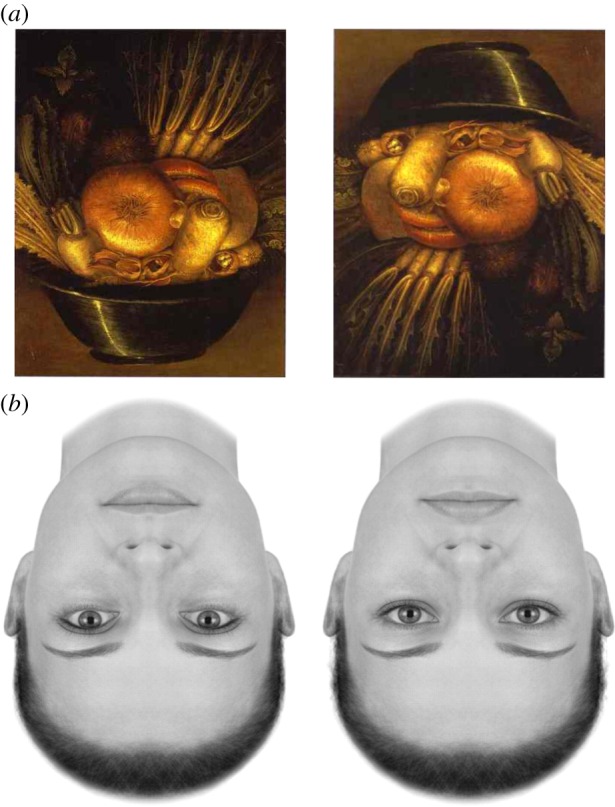Figure 3.

(a) Giuseppe Arcimboldo, The Vegetable Gardener (ca 1590). Oil on panel. Our percepts are constrained by what we expect to see and the hypotheses that can be called upon to explain sensory input [27]. Arcimboldo, ‘a 16th century Milanese artist who was a favourite of the Viennese, illustrates this dramatically by using fruits and vegetables to create faces in his paintings. When viewed right side up, the paintings are readily recognisable faces’ [28, p. 204]. Adapted from Friston [26]. (b) Faces are probably one of the most important (hidden) causes of our sensations. While in Arcimboldo's image, viewing right side up is needed for the configuration of features to appear as a face, when images are already recognizable faces, viewing right side up (by rotating the page) reveals that these faces might in fact be more different than they appear (this is the so-called ‘Thatcher illusion’). These examples illustrate the complex interplay between prior expectations and stimulus features that shape perceptual content (adapted from Little et al. [29]). (Online version in colour.)
